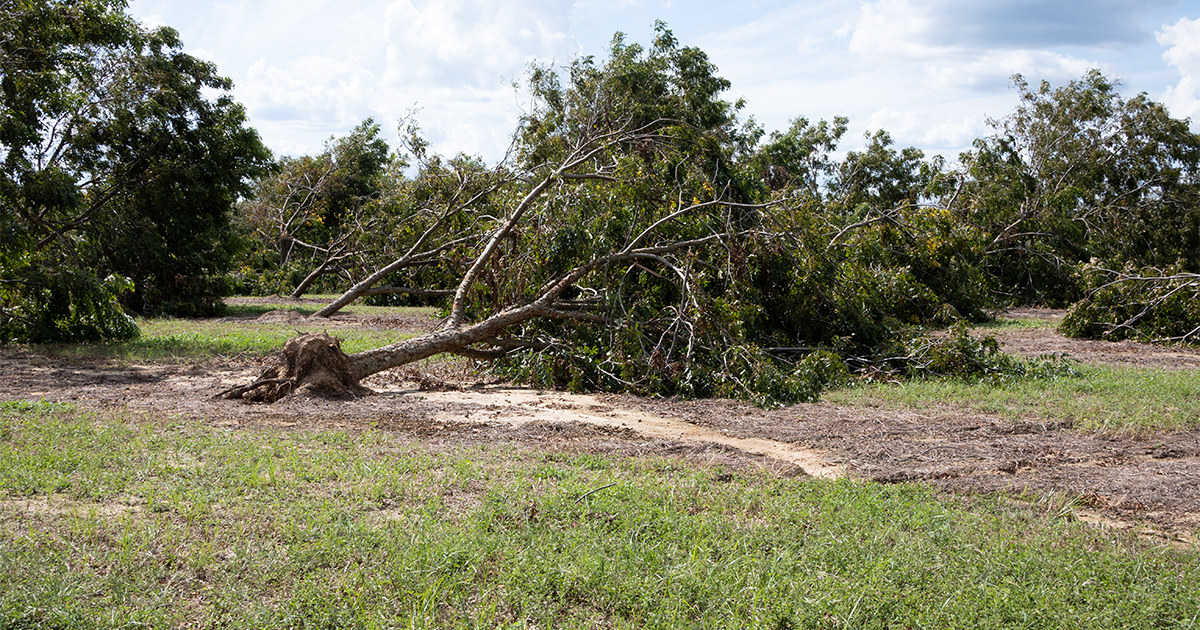Uvalda, GA |
Here in Southeast Georgia, this is the heartbreaking scene that pecan producers in the region woke up to after Hurricane Helene’s destructive march through the state. As you can see, pecan orchards like one, were almost completely leveled by winds of more than 100 miles an hour that toppled trees that producers have worked so hard to grow over the last decade, and were full of this season’s crop.
“This type of wind that occurred at this location, which is far into the state of Georgia, lower Montgomery County was 109mph, was the recording. With a hurricane, your damage actually comes not just from the wind, but from the rain. And everybody knows we were brought so much rain. The square foot of the canopy that’s extended, that picks up the wind, it just blows these trees straight over and in a hurricane, a lot of times we’ll see thirty percent tree loss and we think that’s so bad, forty, sometimes fifty, but again, at this location we’re at the eighty percent tree loss for trees more than ten years old,” says Andrew Sawyer, Area Pecan Agent.
What makes this storm so devastating is the timing, as producers were already struggling as inputs have driven up their cost of production, as well as the fact that the industry itself has was in the midst of transitioning to different, more sustainable varieties.
“For the industry as a whole, we were already struggling. We had the price issues with pecans the last few years. That’s been really hurt by the cost of the inputs. Treatments, our fungicide programs, these are desirable, these have a lot of disease. So, they’ve had a very strong fungicide program; there have been more than ten sprays in this orchard this year, but on the other side of the road from me is a different variety that doesn’t have as much spray. So, the state of Georgia, was already involved in switching orchards, if you will, from high management varieties to low management varieties. These are varieties that still have great production and kernel quality, but we were in that transition. This storm, for all that they’ve gone through, really, really has added to the difficulties,” says Sawyer.
However, the immediate effect is not what’s most concerning, as storms like this one, and damage like this has a lasting impact, as producers will have no choice but to replant, and will have to wait at least seven years for those trees to start producing.
“Normal storm events, we worry about losing some trees and then losing the crop for this year, but with the tree, we can have another crop next year. In a situation like this, if the trees are leaning just forty-five degrees, thirty degrees at this age, their roots are so damaged they won’t come back and they won’t be able to make a crop in a situation like this. You don’t come back with a crop next year. If you replant, which is the only option, we’re not looking for a crop here until now, seven, eight, nine years from now,” says Sawyer.
By: John Holcomb

